
Strength Training 101: Proven Routines and Tips to Boost Muscle, Burn Fat, and Elevate Your Health
Strength training is more than just lifting weights—it’s a holistic approach to improving health, building muscle, and boosting mental well-being. Whether you’re a beginner or an experienced athlete, understanding the science behind strength training can help you unlock your full potential. This guide delves into essential training routines, explains the role of progressive overload, and offers tips to help you avoid common mistakes, track progress, and stay motivated.
The Powerful Benefits of Strength Training

Strength training goes beyond building muscle—it contributes to improved body composition, increased metabolism, and enhanced mental well-being. Research shows that strength training can boost resting metabolic rate (RMR) by as much as 7%, helping you burn more calories even when you’re at rest. By increasing lean muscle mass, strength training also aids in fat loss, improves insulin sensitivity, and enhances posture, all of which contribute to better overall health.
- Mental Health Benefits: Studies indicate that strength training can reduce anxiety by up to 20% and is linked with lower rates of depression and stress.
- Metabolism Boost: Muscle burns more calories than fat, and the more muscle mass you have, the more efficiently your body burns calories—even when you’re not working out. Regular strength training can lead to a long-term boost in calorie burn.
Key Strength Training Exercises for Beginners
Starting with foundational exercises builds a strong base for advanced moves, enhances stability, and reduces the risk of injury. Here are some essential exercises to target major muscle groups and lay the groundwork for a successful strength journey:
1. Squats and Lunges (Lower Body Strength)
- Squats target the quadriceps, hamstrings, and glutes, helping build lower body strength.
- Lunges improve balance and stability while also targeting the same muscles.
Both exercises also work the core and improve overall body coordination. Aim for 3 sets of 10-12 reps with weights or bodyweight as you begin.
2. Deadlifts and Rows (Back and Posterior Chain)
- Deadlifts engage the hamstrings, glutes, and lower back, building essential strength in the posterior chain.
- Rows (either with dumbbells or a barbell) target the back, biceps, and shoulders, improving posture and upper body strength.
Including these exercises 2-3 times a week can enhance muscle balance, helping avoid back pain and improving posture.
3. Push-ups and Pull-ups (Upper Body Strength)
- Push-ups are a compound movement targeting the chest, shoulders, triceps, and core.
- Pull-ups work the back, biceps, and shoulders, creating a balanced upper body routine.
For beginners, try modified push-ups on the knees or assisted pull-ups with resistance bands.
Workout Plans Tailored to Different Goals
Whether you’re aiming for muscle gain, toning, or improved athletic performance, here are some strategies to tailor strength training to your specific goal:
1. Muscle Gain Focus
- Hypertrophy: To build muscle mass, focus on lifting weights at 70-85% of your one-rep max (1RM) for 8-12 reps per set.
- Progressive Overload: Increase weight or reps gradually to continually challenge the muscles. Research indicates that following a progressive overload principle can lead to 10-20% increases in muscle size over a few months.
2. Toning and Endurance
- Higher Reps, Lower Weight: Focus on 12-15 reps per set with moderate weights. Incorporating circuits or supersets can help maintain an elevated heart rate, promoting lean muscle and endurance.
- Circuit Training: Engaging multiple muscle groups in succession keeps the heart rate up, promoting cardiovascular health and lean muscle.
3. Power and Explosiveness
- Plyometric Exercises: Movements like box jumps, jump squats, and burpees improve power and explosiveness, which are essential for athletic performance.
- Compound Lifts: Exercises like power cleans, squat jumps, and kettlebell swings engage multiple muscle groups, enhancing strength and power.
Understanding Progressive Overload
Progressive overload involves gradually increasing the weight, reps, or intensity of your workouts to stimulate muscle growth and strength gains. Research demonstrates that progressive overload is crucial for building both muscle and strength over time.
- Tracking Progress: Record weights, sets, and reps in a journal or app to ensure you’re consistently challenging yourself. Aim to increase weight or reps by 2-5% each week.
- Variety: Change up exercises, intensity, or rest periods every few weeks to keep muscles adapting and prevent plateauing.
Common Strength Training Mistakes to Avoid

Improper form, overtraining, and neglecting rest days are common pitfalls that can hinder progress or lead to injury. Here’s how to avoid them:
- Focus on Form: Good form is more important than lifting heavy weights. Using a mirror or working with a trainer can help you maintain proper alignment.
- Avoid Overtraining: Allowing 48 hours for muscle recovery between strength sessions is essential for muscle repair. Studies show that overtraining can increase cortisol levels, which can interfere with muscle growth and recovery.
- Rest Days Matter: Rest days are when muscles repair and grow stronger, so prioritize at least one or two rest days a week.
Choosing Between Free Weights and Machines
Free weights and machines each have their unique advantages. Here’s a breakdown to help you decide which is best for your needs:
- Free Weights (Dumbbells & Barbells): Free weights engage stabilizing muscles, improve balance, and allow a more natural range of motion, leading to increased strength. However, they can be challenging for beginners without guidance.
- Machines: Machines offer more control and stability, making them ideal for beginners or for targeting specific muscles without needing balance. Studies indicate that machine workouts are often safer for those new to lifting but can limit range of motion as compared to free weights.
Switching to free weights after establishing basic strength on machines can help improve balance, coordination, and overall functional strength.
Stretching, Recovery, and Rest Days
Recovery is vital for muscle growth, and active recovery helps reduce soreness while increasing flexibility. Studies show that stretching post-workout can reduce delayed onset muscle soreness (DOMS) and increase joint range of motion.
- Post-Workout Stretching: Focus on static stretches for major muscle groups, holding each stretch for 15-30 seconds. Key areas to stretch include hamstrings, quads, glutes, chest, and back.
- Mobility Exercises: Foam rolling and dynamic stretches can reduce tightness, improve blood flow, and support muscle recovery.
- Importance of Rest: Muscles need 48 hours to repair after heavy lifting, so incorporate 1-2 rest days per week.
Tracking Strength Gains Over Time
Tracking progress not only keeps you motivated but also allows you to see the effectiveness of your training program.
- Using Logs or Apps: Record your sets, reps, and weights used for each workout in a journal or fitness app. Many people experience a 10-15% strength increase within the first 6-8 weeks when consistently tracking and adjusting workouts.
- Personal Bests: Set milestones to reach personal bests in major lifts. Seeing improvement in numbers can help maintain motivation.
Frequently Asked Questions
Q: Will strength training make me bulky?
A: Strength training alone will not make you bulky, especially for women, due to lower testosterone levels. Building significant muscle size requires a high-calorie diet and focused hypertrophy training.
Q: How many times a week should I strength train?
A: Aim for 3-4 sessions per week, depending on your goals and recovery time. Beginners may benefit from 2-3 days to allow the body time to adapt.
Q: How do I manage soreness after strength training?
A: Soreness is common when starting but can be minimized with stretching, hydration, and balanced rest. Foam rolling and active recovery exercises on rest days can also help reduce soreness.
Conclusion
Strength training is an empowering journey that offers benefits beyond physical fitness, from improved mental health to a stronger metabolism. By focusing on foundational exercises, following progressive overload, and balancing rest with effort, you can unlock your strength potential and achieve sustainable results. Start with the basics, track your progress, and watch your strength and confidence grow over time!
